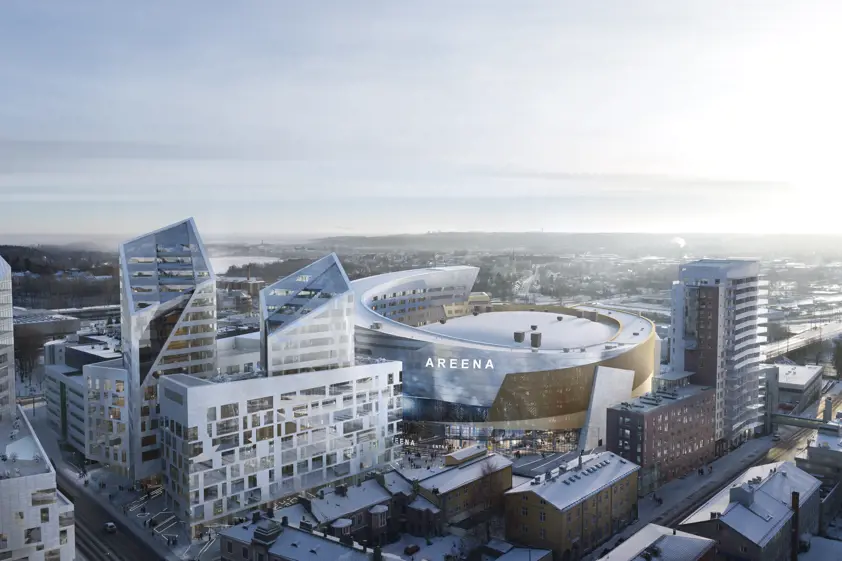“My goal was to reflect a 21st century sensibility of living within a high-density sustainable lifestyle. Each of the series of buildings has its own unique identity and as a whole create a dynamic urban skyline that reflects light, color and form. Like a precious gemstones on a crown the forms crystallize in a richness of contemporary urban living”, says Daniel Libeskind.
Stefan Blach, Partner and Architect who is in charge of this project at Studio Libeskind, explains that “we were aware that this project would make a substantial change for the city of Tampere. We were building in a location that was never built before and also a very central location. It is a true landmark in Tampere now, especially with the height of the residential buildings, which change the skyline of Tampere.”
“Building on top of the railway was a sustainable strategy as we do not occupy any new plot. Secondly, the high density is also a sustainable choice, as a comparably small footprint is used for a large program. Thirdly, our ambition is always to create something that is durable, that lasts a long time and that people accept and are proud of. This is a building complex that will last and people will enjoy, explains Stefan Blach.
Regarding sustainability in general in architecture, according to Blach, “Clients pay a major role as sustainable choices are often more expensive, but they also last longer. Sustainability certifications have become more common, but it is an additional investment from the client’s side. In the big picture, regulation and financial incentives from governments are also needed, to boost sustainable development in architecture and construction”.
“Outdoor spaces, balconies and deckings, play an even more important role nowadays in architecture, as since the pandemic people are really looking for green and safe environments with fresh air, in proximity to their homes and offices. What also plays a vital role for an architect, is choosing local and natural materials”, Blach explains.
In Tampere residential building’s top floor apartment, decking is made of UPM ProFi Piazza One. This composite decking material is made of 75 % recycled, European plastic.
“Plastic is a huge problem and the best we can make of it, is re-use it in long lasting construction material, so this is a very good solution”, says Blach.
What is also important from a sustainability point of view is that it is durable with a long, up to 25 years material. European plastic is collected and produced in Germany to a high performing composite, so no long transportation is needed to deliver it to European customers. You can read more about this locally produced, sustainable decking material here: www.upmprofi.com
